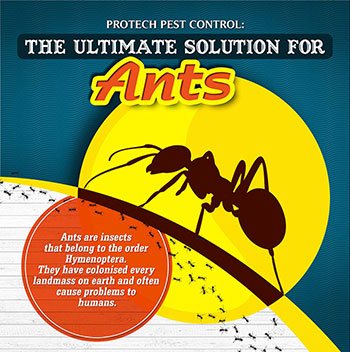Discover Important Approaches To Secure Your House From Rodents In The Attic Room
Discover Important Approaches To Secure Your House From Rodents In The Attic Room
Blog Article
Short Article Created By-Britt Cheek
Visualize your attic as a cozy Airbnb for rodents, with insulation as fluffy as hotel cushions and wiring a lot more enticing than area solution. Currently, visualize silverfish natural pest control throwing a wild celebration in your home while you're away. As a property owner, ensuring your attic is rodent-proof is not nearly comfort; it's about securing your home and enjoyed ones. So, what basic steps can you take to protect your shelter from these fuzzy intruders?
Check for Access Things
To begin rodent-proofing your attic room, inspect for entry points. Beginning by thoroughly checking out go source of your home, looking for any type of openings that rats might utilize to get to your attic. Look for gaps around energy lines, vents, and pipelines, along with any kind of fractures or holes in the structure or exterior siding. Make certain to pay very close attention to areas where different building products meet, as these prevail access factors for rodents.
Furthermore, evaluate the roofing system for any damaged or missing roof shingles, in addition to any voids around the edges where rats could squeeze with. Inside the attic room, try to find indicators of existing rodent activity such as droppings, ate wires, or nesting products. Make use of a flashlight to thoroughly inspect dark corners and covert rooms.
Seal Cracks and Gaps
Inspect your attic extensively for any type of cracks and voids that need to be sealed to avoid rodents from getting in. Rodents can press through also the tiniest openings, so it's important to secure any kind of possible access factors. Inspect around pipelines, vents, cords, and where the wall surfaces fulfill the roofing system. Use a mix of steel woollen and caulking to seal these openings effectively. Steel woollen is an outstanding deterrent as rats can't eat via it. Guarantee that all spaces are securely sealed to deny accessibility to undesirable parasites.
Don't ignore the importance of sealing gaps around windows and doors as well. Usage climate removing or door moves to seal these locations properly. Examine the areas where utility lines enter the attic room and seal them off using an appropriate sealer. By taking the time to seal all splits and voids in your attic room, you produce a barrier that rats will find challenging to violation. Avoidance is type in rodent-proofing your attic, so be extensive in your initiatives to seal any possible entry points.
Remove Food Resources
Take positive actions to remove or keep all prospective food sources in your attic room to prevent rodents from infesting the space. Rats are attracted to food, so eliminating their food resources is essential in maintaining them out of your attic.
Right here's what you can do:
1. ** Store food securely **: Avoid leaving any kind of food items in the attic. Shop all food in closed containers made from steel or heavy-duty plastic to stop rats from accessing them.
2. ** Clean up particles **: Get rid of any kind of stacks of debris, such as old papers, cardboard boxes, or wood scraps, that rodents could make use of as nesting material or food sources. Keep the attic room clutter-free to make it much less enticing to rats.
3. ** Dispose of rubbish effectively **: If you use your attic room for storage and have garbage or waste up there, make certain to dispose of it frequently and appropriately. Rotting trash bin draw in rats, so maintain the attic room clean and devoid of any kind of natural waste.
Verdict
In conclusion, remember that an ounce of prevention is worth an extra pound of cure when it pertains to rodent-proofing your attic.
By taking the time to inspect for entry points, seal cracks and voids, and get rid of food resources, you can keep unwanted bugs away.
Remember, 'An ounce of avoidance is worth an extra pound of treatment' - Benjamin Franklin.
Keep aggressive and secure your home from rodent problems.
